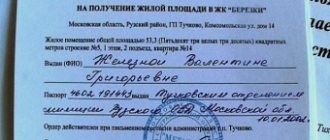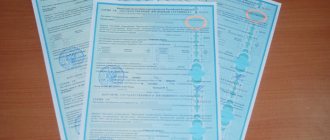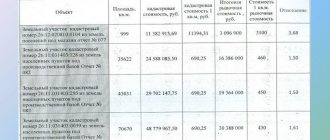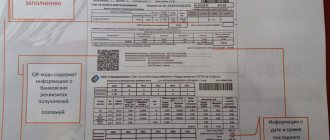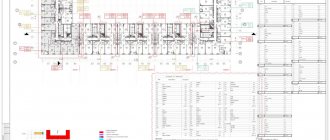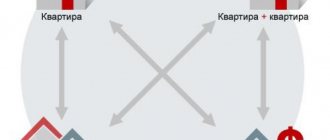In Soviet times, when receiving, purchasing and re-registering real estate, one of the documents that confirmed the right to housing was a warrant. It had legal force until 2005 and could be used when transferring rights to real estate. Today, the procedure for carrying out transactions with this document has been changed. So, let's take a closer look at what a warrant is, whether a warrant for an apartment is a document of title, and how to issue/restore a certificate in 2021.
What is an order and what does it look like?
An apartment warrant is a document that allows you to inspect the living space and move in. Before the collapse of the USSR, it was the main document giving the right to live in official housing.
Currently, a warrant is issued to a person who has received the right to reside in a municipal or service apartment for occupancy.
The order is an A4 document containing the following information:
- Full name, series and number of the resident’s passport;
- name of the authority that issued the warrant;
- address of the housing location;
- area provided;
- a surname list of the resident's family members;
- date of issue and expiration date.
The order consists of two parts - the main sheet and the tear-off spine, which remains with the authorized body that issued the document.
Search protocol
When conducting a search, the investigator must draw up a protocol on the actions taken. It can be drawn up both during the search and after it.
The search protocol must necessarily contain the following information:
- date and place of the search;
- start and end time of the investigative activity;
- position, surname, name and patronymic of the person who conducted the search;
- personal data of all people who participated in the procedure;
All information about the seized object is entered into the protocol: weight, quantity, measure, under what circumstances it was found, whether it was given out voluntarily or seized forcibly, in what place it was found. Also, this item must be directly related to the criminal case in which the search was carried out. The seizure of items not relevant to the case can be appealed by appealing to the prosecutor or the court.
When confiscating complex equipment (for example, computer equipment), it is necessary to indicate its serial and serial numbers for accurate identification. The use of technical means for conducting the examination is also indicated in the protocol; in addition, it should be noted that persons involved in the production were warned in advance about their use.
The order of procedural actions is indicated in a strict sequence - the same one that the police followed during the search. All comments made by the participants in the process are also recorded in the protocol.
A copy of the investigative report is given to the person being searched or to adult members of his family. A sample search protocol is presented below.
Where to get it
A warrant is issued on the basis of a social rental agreement for municipal housing or an employment contract with an organization, as well as upon receipt of the right to a hostel for full-time university students.
Persons who have received the right to social rent are issued a warrant upon signing a tenancy agreement at the housing committee of the local municipality.
For those receiving official housing, employees, career military personnel and university students, warrants are issued before moving in or at the personnel department, commissariat or dean's office of the university, respectively.
Concluding a social tenancy agreement does not always imply immediate occupancy in an apartment. The issuance of warrants and the occupancy of persons who have signed a social tenancy agreement in practice occurs as free rooms or apartments become available.
Receiving an order is carried out without a queue for the following persons:
- disabled people;
- old age pensioners;
- large families;
- military personnel and employees when moving to a new settlement with their families.
To obtain a warrant, military personnel must submit the following documents, in accordance with paragraph 32 of Government Decree No. 1054:
- certificate of delivery of previous official housing;
- certificate confirming the absence of a privatized apartment in the host city;
- military ID;
- copies of passports of all family members (for children - copies of birth certificates).
The received warrant gives the right to move in within the period specified in the document.
What is the difference between a search and an inspection?
As noted earlier, a search is a procedural action that is carried out in order to discover objects, valuables or documents relevant to the investigation of a criminal case.
The search is carried out to search for items the circulation of which is prohibited by the legislation of the Russian Federation. Unlike the search procedure, during an inspection the structural integrity of the object cannot be violated; any damage is prohibited. Such a process is governed by administrative law, not criminal law.
You can only inspect a vehicle or a person, and only search the home and surrounding area. At the same time, the inspection procedure is more superficial and does not require additional approval, unlike a search, which requires an investigator’s order or court permission.
How to recover
If the warrant is lost, it must be restored in order to use the residential premises legally. To restore, you should contact the authorized service where the tear-off counterfoil of the order is stored, with the following documents:
- Russian passport;
- a copy of the social tenancy agreement;
- certificate from the house management.
Restoring the order takes 2-5 days, depending on the work of the authorized body that issued the residence permit.
If there are no other documents for the apartment besides the warrant, then the document is restored through the courts.
The absence of a social tenancy agreement is possible if you received an apartment in the period before 2001, when the only document for non-privatized housing in many municipalities was a warrant received from the enterprise. When going to court, you must present receipts for payment of utility bills and obtain testimony from neighboring witnesses confirming the plaintiff’s residence in the specified apartment.
Who signs?
The cash receipt order is signed by the chief accountant. If a specialist is unable to perform his task, it is assigned to an authorized accounting employee, and then to the manager. And only if all the persons indicated above have already transferred their powers, then the right passes to the cashier.
The corporate card of SEA BANK Visa Business is a convenient means of organizing and controlling entertainment and travel expenses for company employees.
How to divide orders in a privatized apartment
The division of orders into several is often required in municipal apartments during divorce proceedings or if some residents wish to rent housing from the authorities under a separate agreement. This desire may arise due to:
- systematic violation by neighbors of the rules of living in the apartment;
- non-payment of utilities and other mandatory payments by neighbors;
- desires of neighbors to privatize housing according to separate documents.
Splitting the order allows you to separate the activities of your roommates and be responsible only for your own actions.
To divide a collective order into individual ones, you must:
- apply to the municipal housing committee with an application;
- wait for a decision to be made (up to 10 days);
- receive new orders.
When making a decision, municipal authorities evaluate the size of the isolated areas per family after the division of orders. The minimum area per person should not be less than 12 square meters. m.
Military personnel and enterprise employees living in official housing submit an application to the commandant of the military unit or the head of the personnel department, respectively.
The text of the statement states:
- required number of orders instead of one;
- the area per order after division;
- a list of residents assigned to each of the orders;
- the responsible employer of each order;
- grounds for separation.
If the apartment has already been privatized into common ownership, then its division into shares by order allows residents of each isolated area of the apartment to receive separate bills for electricity and other utilities.
After the privatization of the apartment, the orders cease to be valid, but the apartment is divided into shares proportional to the living space indicated in the order.
Possible fines for violations
If the PQR is filled out incorrectly, this is not a violation. But the taxation system in Russia is such that any errors automatically equate a completed document with an empty form. In other words, it doesn't exist. But there is a fine for lack of PKO. This is a simple scheme with the help of which the Federal Tax Service controls document flow.
The sanction itself under Article 120 of the Tax Code entails a fine of 10 thousand rubles. But the main danger lies in another aspect. Since a cash receipt order is a primary document, if it is missing, there are grounds for canceling the simplified taxation system in a business entity. And it’s not for us to explain what troubles and losses such a decision by the tax authorities entails. Therefore, in case of any error, you should reprint the entire form and format it in accordance with the established requirements. This is especially true if the date is entered incorrectly on the form, and the signature of the responsible person is missing, which occurs quite often. The human factor plays a role, especially if for an employee this is already the hundredth paper of the day that needs precise execution.
Obtaining an apartment by order
Checking into residential premises in the presence of a warrant occurs in the following order:
- presentation of the warrant to the manager of residential premises;
- payment for accommodation (if necessary);
- inspection and acceptance of the premises according to the acceptance certificate with an inventory;
- obtaining a document on the right of residence.
The warrant is presented to the commandant of a service or student dormitory, and in the case of municipal rentals, to the head of the housing management.
Payment for rental housing under an order can be differentiated according to the utilities actually consumed, when moving into municipal housing, or made in advance in the form of a single monthly payment - when moving into a service or student dormitory.
After submitting the warrant to the commandant, the occupant signs the acceptance certificate and 2 copies of the property inventory, keeping one for himself. The inventory contains a list of furniture and equipment in the residential premises being rented, as well as notes on the presence of cosmetic repairs (wallpaper, curtains, etc.).
When moving to another housing due to a move, a warrant for a new living space is not issued until the previous place of residence has been completely handed over according to the inventory. In case of loss or damage of part of the property, it is subject to compensation at the expense of the resident.
Warrant for residential premises - its legal meaning
Introduction:
Relations related to social hiring are regulated by Art. 672 of the Civil Code of the Russian Federation, according to which the object of social rental is residential premises located in houses of the state and municipal housing stock and intended for social use, i.e. we are talking about housing provided free of charge to those on the waiting list by the local administration or government organizations.
Also, the problems of regulating modern issues on the topic “Order for the occupation of residential premises and its legal significance” are addressed by O. N. Bryukhanov, V. A. Zhila, A. I. Pluzhnikov in the monograph “Gas Supply”. This book was published by the Academy publishing house in 2008, contains 448 pages. Information is given about gas fuel, the basics of the theory of combustion and gas movement; descriptions and characteristics of gas supply systems. The requirements of regulatory documents that must be observed during the design, construction and operation of gas supply systems are covered. The basics of organizing design, construction, repair and restoration work, emergency dispatch service, and safety precautions in the gas industry are outlined. Information is provided on new progressive methods of repair and restoration work, new technologies for gas supply and gas distribution, main domestic and foreign gas-using equipment, methods and means of rational use of natural gas. The basic requirements for environmental protection, the use of liquefied hydrocarbon gases and corresponding gas-using equipment are outlined. For university students.
How to privatize an apartment without a warrant
Privatization of an apartment occurs on the basis of a decision of the local municipality, which is issued regardless of the presence of a warrant.
Only municipal housing space occupied under a social tenancy agreement can be privatized without a warrant.
Service housing and apartments for military personnel are privatized by order and in the presence of appropriate benefits for length of service.
To privatize an apartment without a warrant you should:
- prepare documents for the apartment;
- submit an application to the housing committee of the city administration;
- obtain permission for privatization;
- register ownership in Rosreestr.
To privatize an apartment, you will need a social tenancy agreement, a copy of your passport, as well as a purchase and sale agreement if the right to rent was acquired after 1992.
The application for privatization must indicate:
- name of the circulation authority;
- a list of all rights holders for the apartment by name;
- start date of residence;
- the type of law on the basis of which residential premises are occupied - municipal lease;
- address of the apartment location;
- cadastral number;
- living and common areas;
- number of rooms.
If the apartment has not yet been registered with the Unified State Register of Real Estate, then before privatization it is necessary to issue a technical passport.
In the absence of a warrant indicating the exact parameters of the living space, to obtain a technical passport, it is necessary to call specialists from the BTI to take measurements and draw up an explication plan.
After registration of the registration certificate, the apartment is registered with Rosreestr and assigned a permanent cadastral number.
Upon registration of the apartment and the availability of social tenancy rights, municipal authorities issue a permit for privatization. With this document, you must contact Rosreestr again, attaching a receipt for payment of the state duty (350 rubles), as well as the received registration certificate.
Watch the video for step-by-step instructions on how to privatize an apartment:
Shelf life
As with all primary documentation, the same rule applies here. More precisely, it should be stored for exactly five years. The countdown of the period begins not from the moment of creation and completion, but from the stage at which a specific reporting period ends, which, according to tradition, is the end of the year. Therefore, add more time to the deadline until the end of the period. It is also worth remembering that all responsibility for proper storage rests with the enterprise. And it is very difficult to prove the fact that the KO-1 form was lost due to circumstances beyond the entrepreneur’s control. And the difficulties and red tape associated with this are very great.
Question answer
Is a warrant a document of title? – Yes, it is, but only in the absence of other title documents. In case of social hiring, such a document is an agreement with the municipality.
Where is the apartment warrant kept? – The order is kept by the representative of the house management in case of social renting or by the commandant of the hostel when living in official housing.
How many warrants can there be for an apartment? – The number of warrants issued for one living space depends on the number of living families and cannot exceed the number of rooms in the apartment. One person can only have one residential warrant.
An order is a document indicating the existence of the right to reside in official or municipal housing and determining the period of residence and the number of square meters occupied. If title documents are lost, they can be restored using a warrant.
Types of search
The investigative procedure can be classified according to several criteria:
- number of parallel objects being searched;
- area of the object under study;
- procedure;
- directly the object itself.
According to the sequence, the search can be divided into:
- Primary.
- Repeated.
A repeated examination is carried out in cases where, due to the prevailing circumstances, it was not possible to find enough information or the investigative body has acquired technical and scientific means that can help to study the object being examined in more detail.
